Go to https://ad-optimizer.metoda.com/
For the onboarding of Sponsored Display, click "Campaigns". This leads you to the campaigns section.
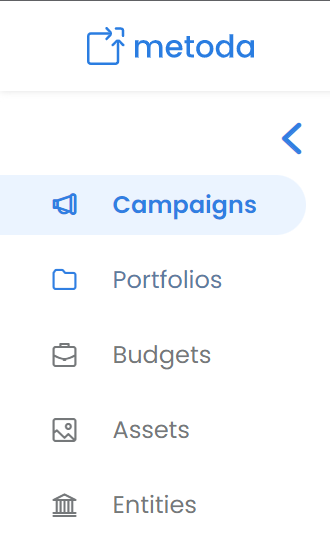
You can either:
- Case 1: add SD campaigns for new products manually by clicking “New campaign” or

- Case 2: import several new ASINs at once using “Import” and our onboarding template (the Excel-template can be downloaded by clicking "Import", "Download example Excel")

In both cases, you need to fill in all mandatory information:
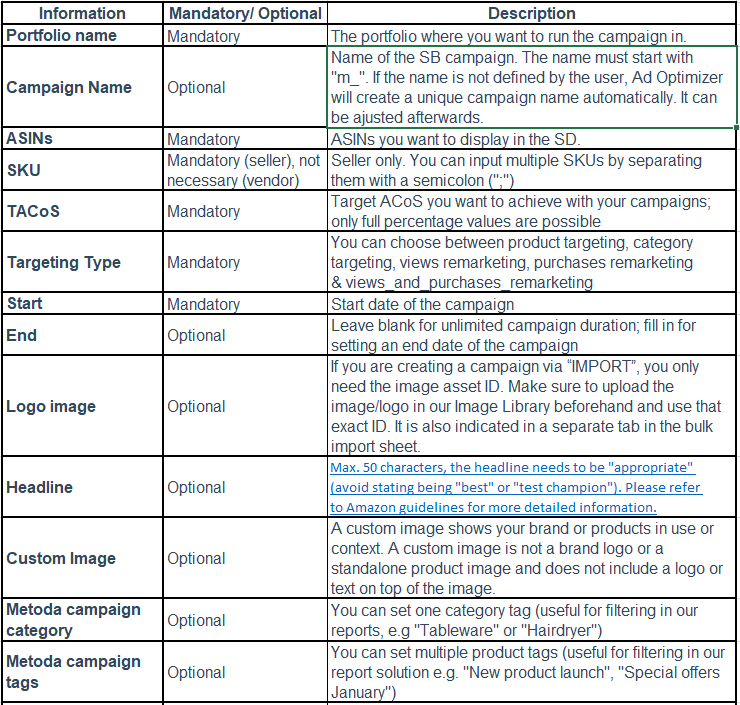

Case 1: Generation of new campaigns using "New campaign"
Step 1: Campaign selection
- Select Sponsored Display
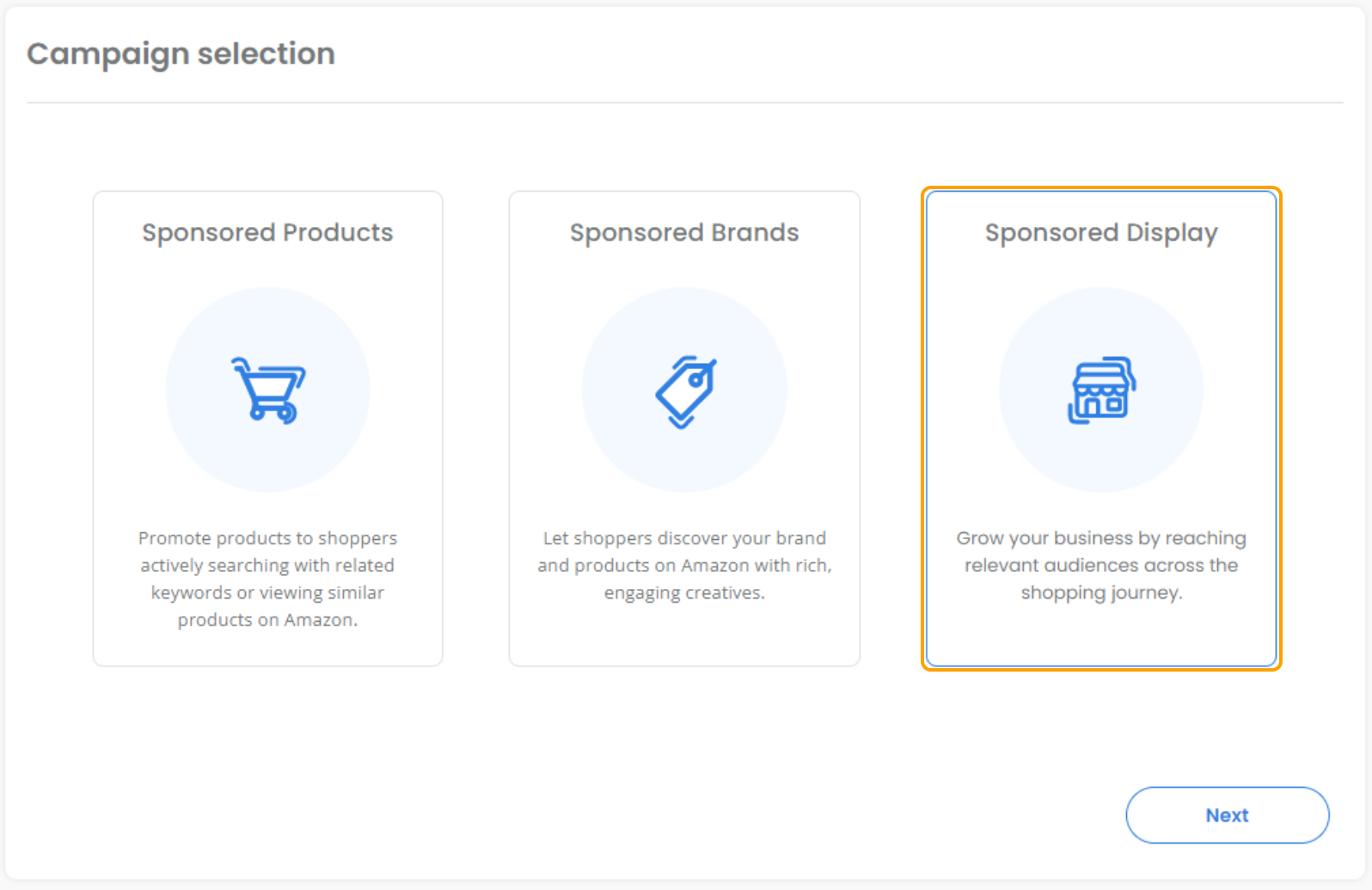
Step 2: Campaign settings
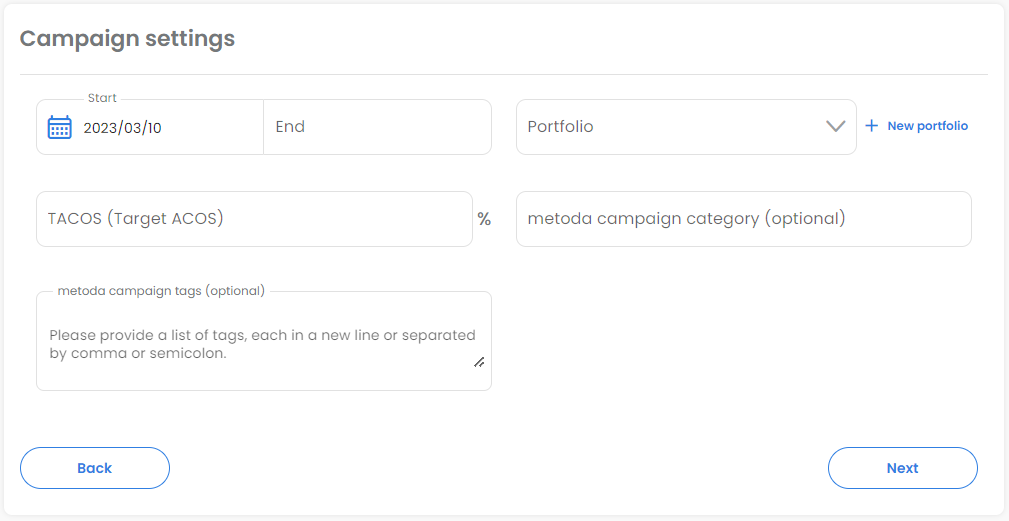
- Define the start date (end date optionally)
- Select the right portfolio (use the drop-down list to select an existing portfolio or create a new portfolio via "+ New portfolio")
- Set a TACOS
- optional - Choose a metoda campaign category (the existing categories are displayed in the selection list after entering. Select one of them or create a new category)
- optional - Choose one or several metoda campaign tags
Step 3: Items to advertise
Enter the ASIN(s) of the product(s) you want to advertise
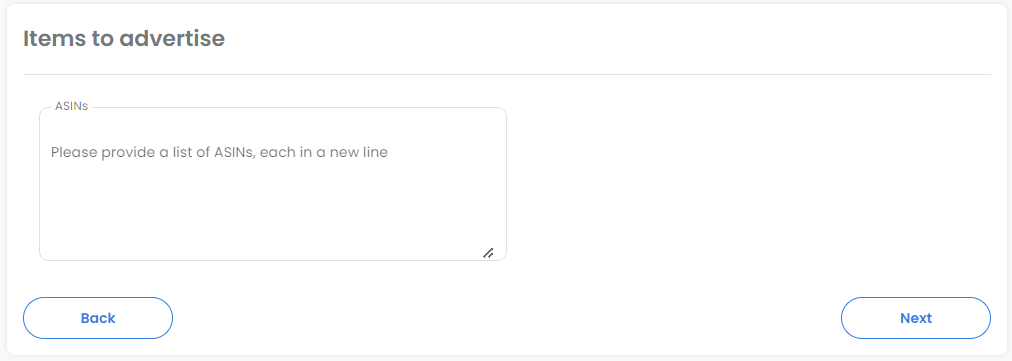
For Sellers: also enter the corresponding SKU for each ASIN.
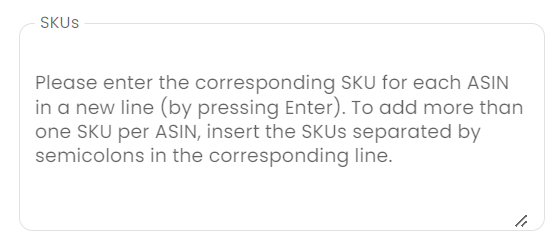
Step 4: Targeting
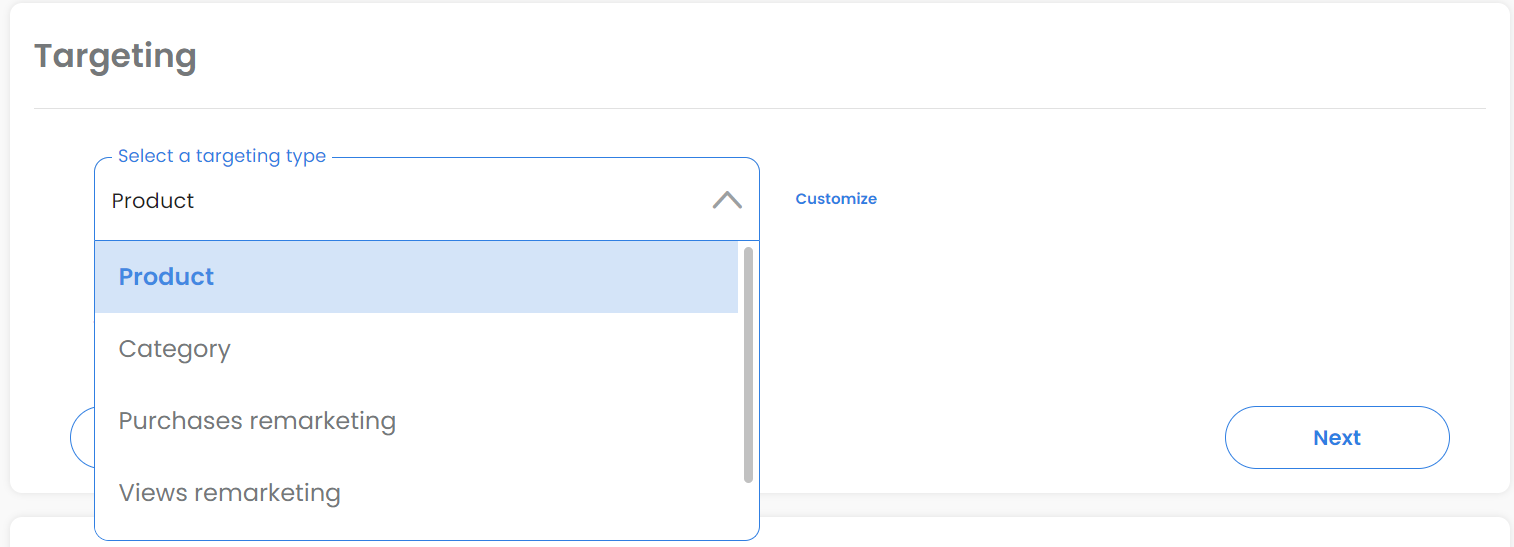
Step 4.1: Product targeting

Click on "Customize" to add target ASINs
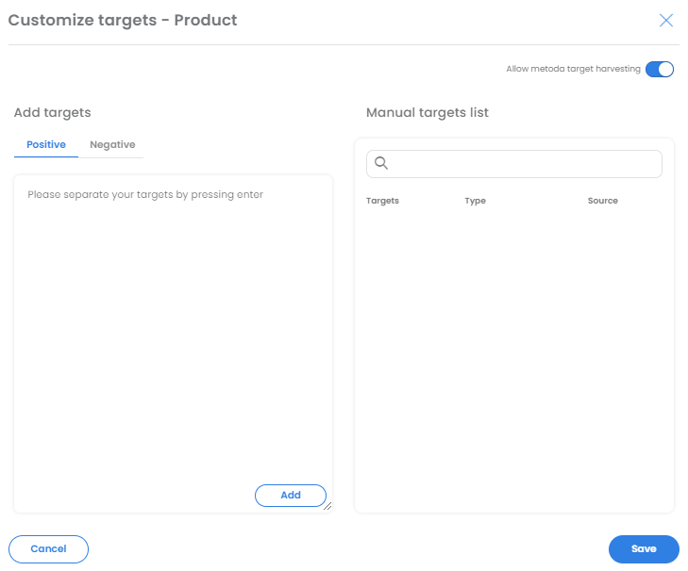
"Allow metoda target harvesting" - activated per default.
Please make sure that you have added manual targets, if you deactivate "metoda target harvesting". Otherwise, the campaign will be "incomplete" and cannot be shown.
Important note: If you disable automatic target harvesting after creation, the targets already added by the system will remain. However, no new targets will be added by our target harvesting logic.Basically, in terms of targeting strategy, we differentiate between the following tactics:
- Defend strategy: use product targeting and defend your own ASINs with your own ASINs (e.g. for cross-selling or up-selling purposes). With this tactic, we try to protect your own product detail pages from competitors.
- Narrow attack strategy: use product targeting and attack relevant competitor products (e.g. close substitutes of your products, complementary products). With this tactic, we try to steal traffic from relevant competitor product detail pages.
- Broad attack strategy: use category targeting in order to attack all other products in the same category. This is a very broad approach but does not require as much research from your side.
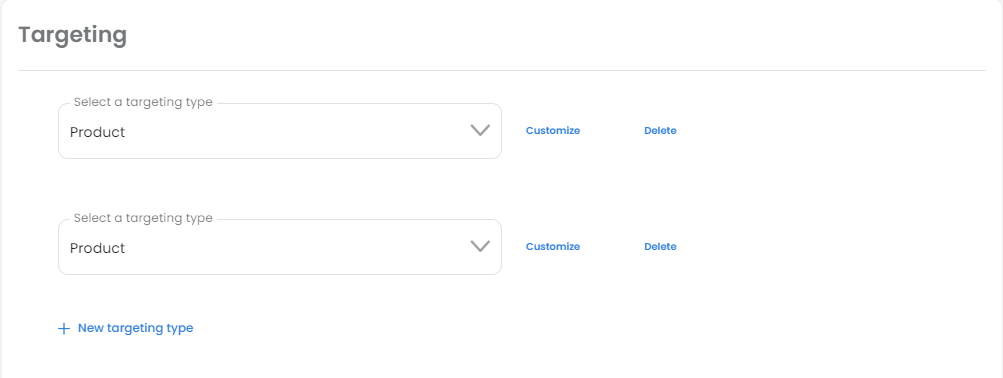
It is possible to set up the same targeting type multiple times. In the case of product targeting, this could be useful for defend and attack campaigns, for example.
Step 4.2: Category targeting
Select "Category" in the drop-down

For category targeting, Ad Optimizer automatically uses Amazon's suggested categories for the advertised product.
Click on "Customize" to add negative targets
It is possible to set brands negatively. To do this, enter the brand name and select it from the drop-down list. It is also possible to set products negative. Therefore, enter the ASINs.
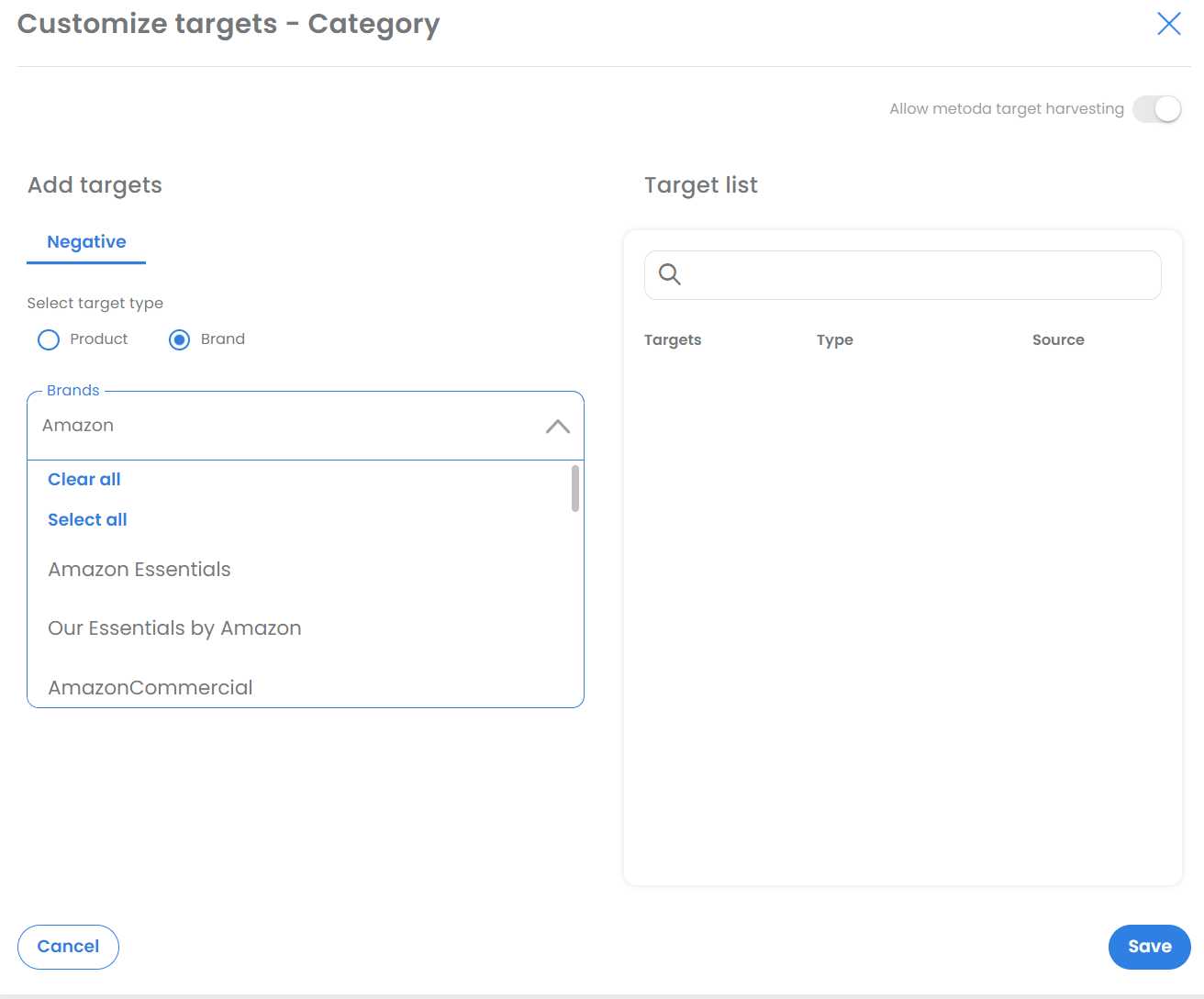
Negative targets added:
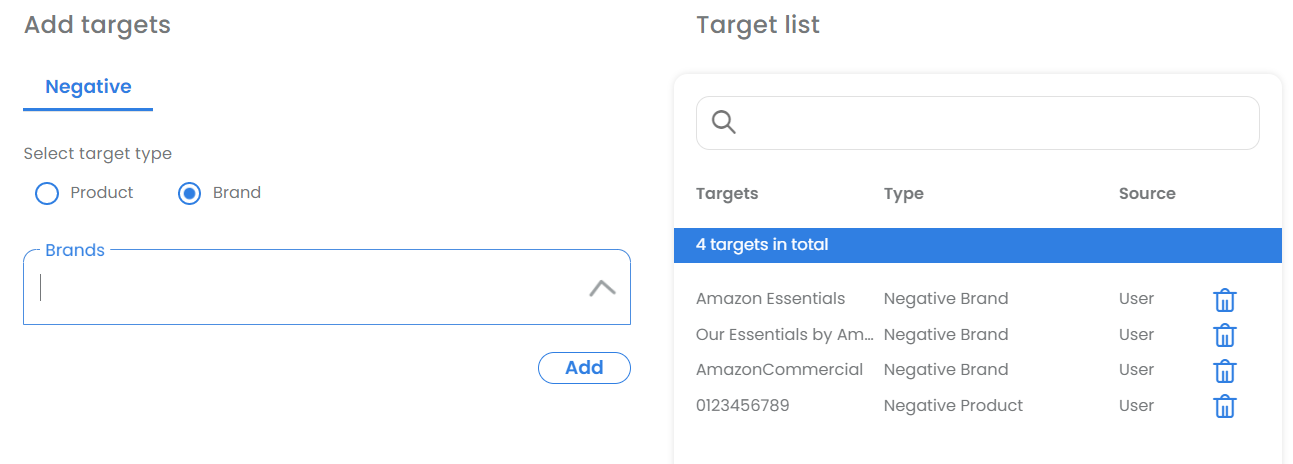
Step 4.3: Purchases / Views remarketing
Purchases and Views remarketing can be created individually or together in one campaign.
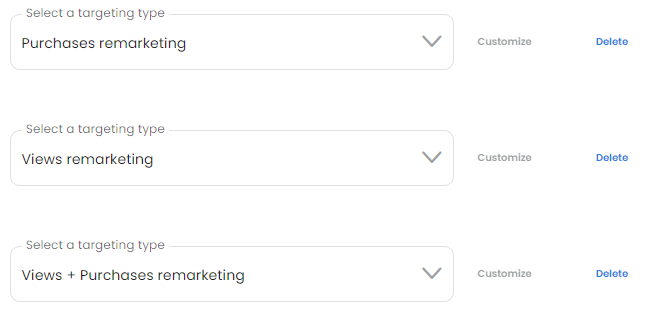
These are auto campaigns, so you cannot customize them.
A lookback window of 30 days is set in each case, with "advertised products" and "similar to advertised products" selected as the audience.
Step 5: Creative
Optionally, a headline, a logo and a custom image can be added. You can customize your ad individually and combine any of those options as desired. If none of these options are active, the creative will be displayed with the default settings containing a product image, title, etc. (depending on the placement)
Add a headline (max. 50 characters).

Select a logo or upload a new one.
- min. 600x100 pixel, max. 1 MB file size, PNG or JPG format
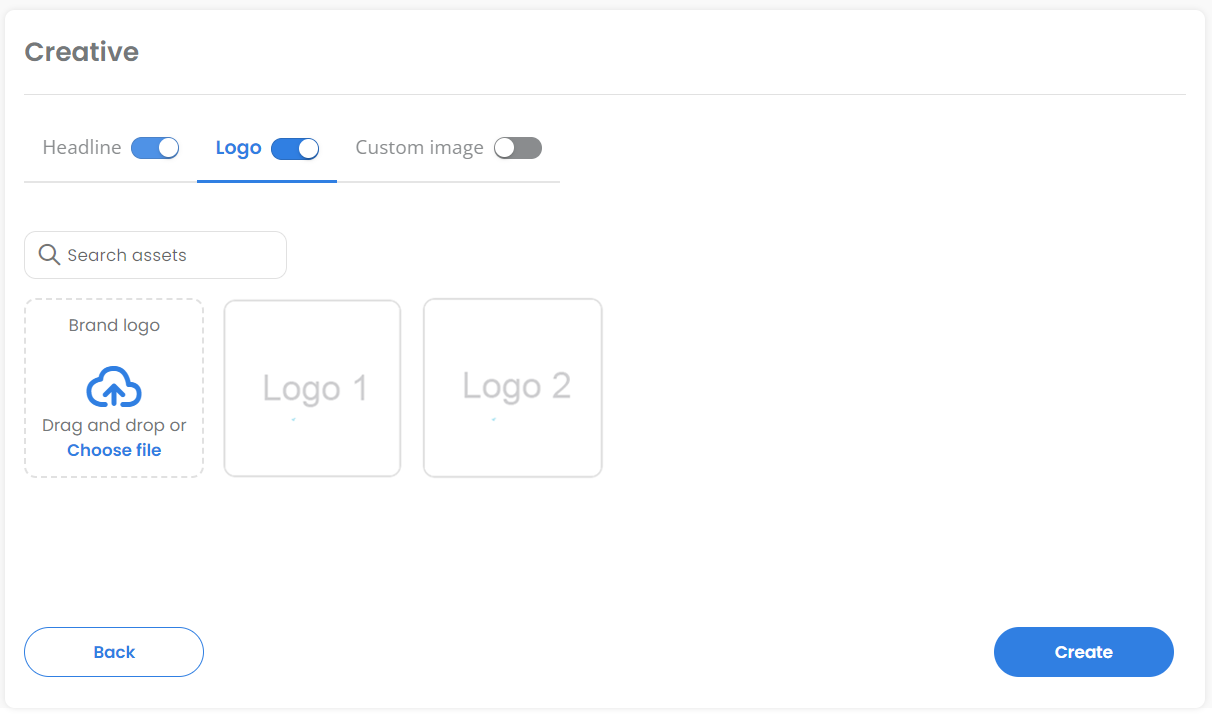
Add a custom image.
Here are the specs for the custom images:
- min. 1200x628 pixels: square (1:1), horizontal (1.91:1), and vertical (9:16), max. 5 MB file size, in PNG or JPG format, the content may not contain text, graphics or logos

When adding a custom image, it will automatically be applied to all three formats: Square (1:1), Horizontal (1.91:1), and Vertical (9:16). If you wish to customize the images for each format individually, you can do so by using the "Replace custom image" menu. This option allows you to replace the images for each format separately, enabling you to use up to three different images per creative.
Step 6: Create
It is always possible to go back to the individual steps and change something there.
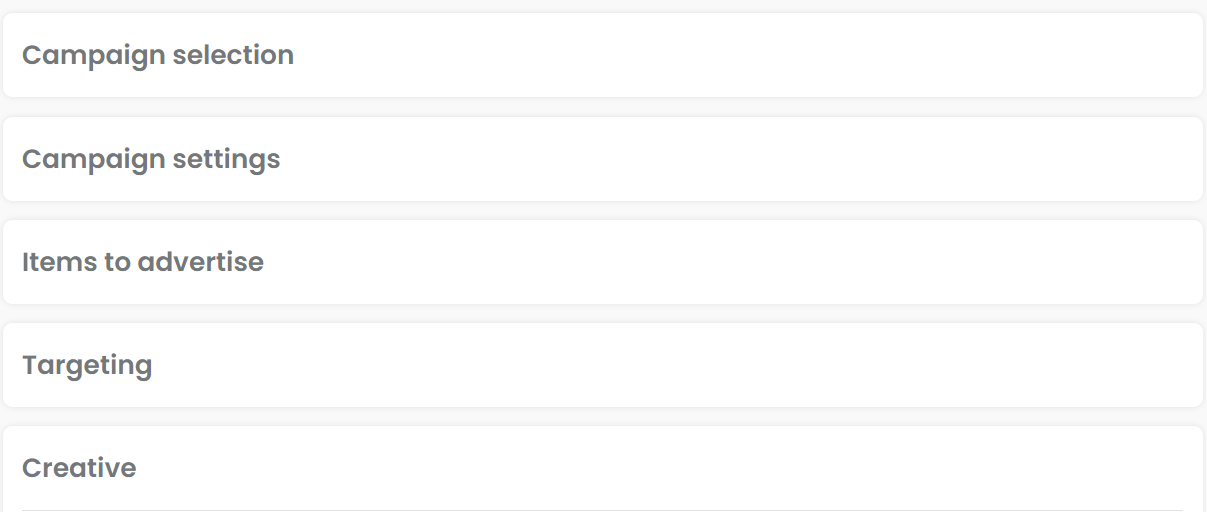
When everything is filled in, click create to create the campaign(s).

If everything has worked, the following message will appear. Then refresh the page to see the created campaigns in AdOptimizer.

If something didn't work, you can download an Excel with the error report, correct the errors, and upload the file again.
IMPORTANT NOTE: setting a budget period is the necessary requirement for your campaigns to be displayed. Only if a budget period for the selected portfolio exists, will your campaigns be running.
- Set a budget: make sure to set a budget in Ad Optimizer (ideally within separated/dedicated portfolios, e.g. "m_sd"). The Ad Optimizer will take over the budget management. Setting a budget period in the respective portfolio is the necessary requirement for your campaigns to be delivering. Otherwise, the campaign does not have any budget to be spent and will be paused accordingly.
Case 2: Generation of new campaigns using "Import"
Step 1: Download the Excel template and fill in all mandatory information.
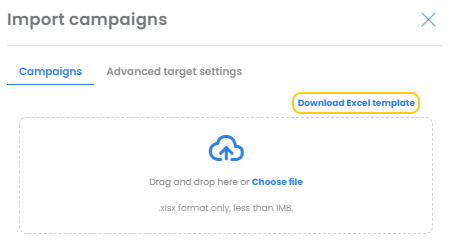
Open the "SD (image)" spreadsheet.

The Excel template has instructions on how to fill in the cells.
Step 2: Save the Excel and drag it into the "Import campaigns" screen.

Choose the "Campaigns" upload as well as the matching import settings.
If the bulk template contains numerous targets/keywords, consider selecting "Remove invalid targets/keywords and only add valid ones." However, for a more cautious approach, opt for "Refuse creation/update and provide issue report" to ensure any potential issues with the campaigns are identified and not overlooked or left uncreated.
Download error report if it fails
In case something is not filled in properly, you will receive error messages in an Excel report, indicating in which row adjustments are necessary (Column U). This is only available if you choose the import setting "Refuse creation/update and provide issue report". Common mistakes: e.g. not all mandatory fields were filled, start date in the past, wrong formatting of the cells. Please read the instructions in the template carefully and follow the guidelines. Do not add or delete any columns or change the order of the columns!
Example Errors

